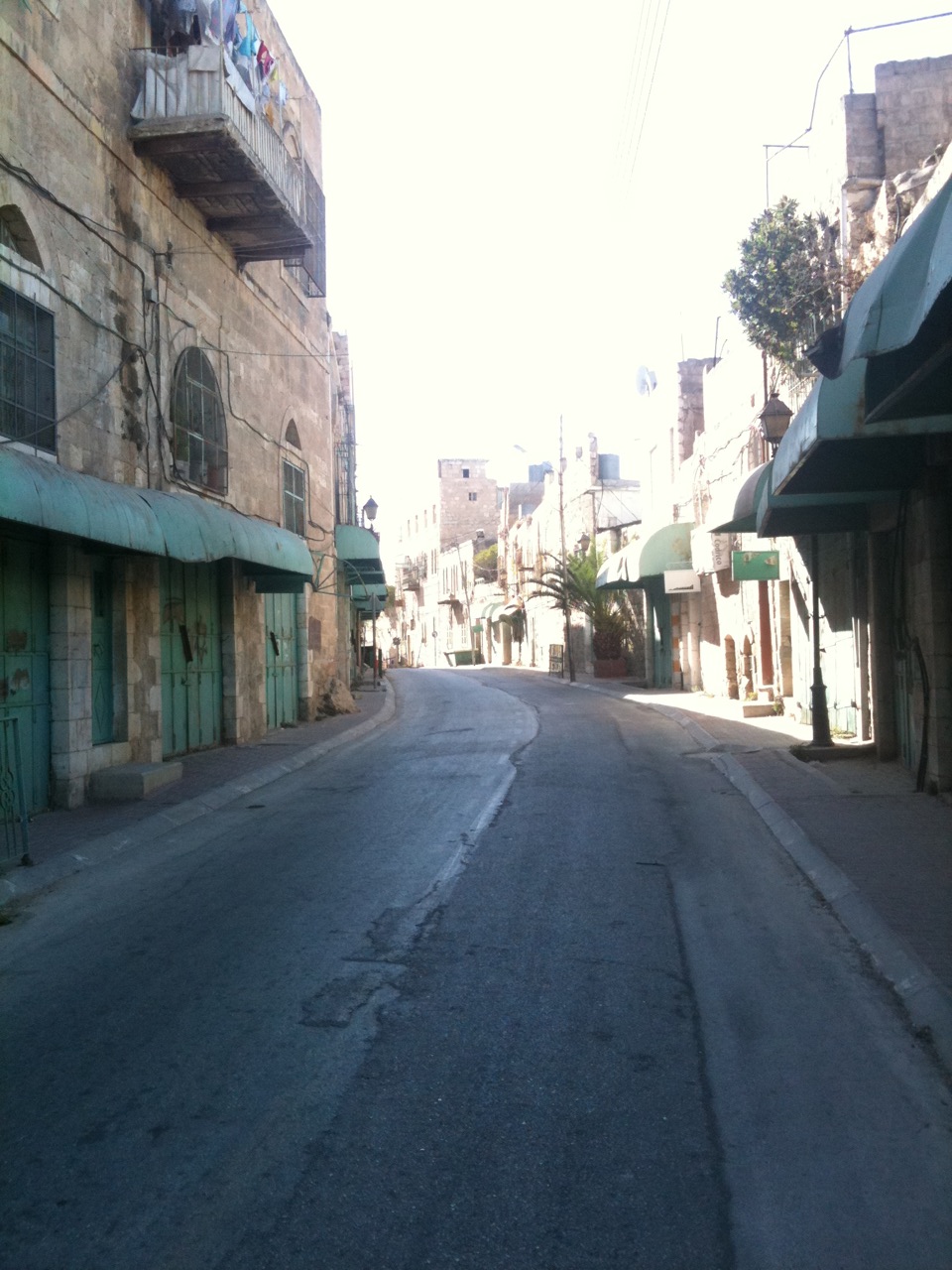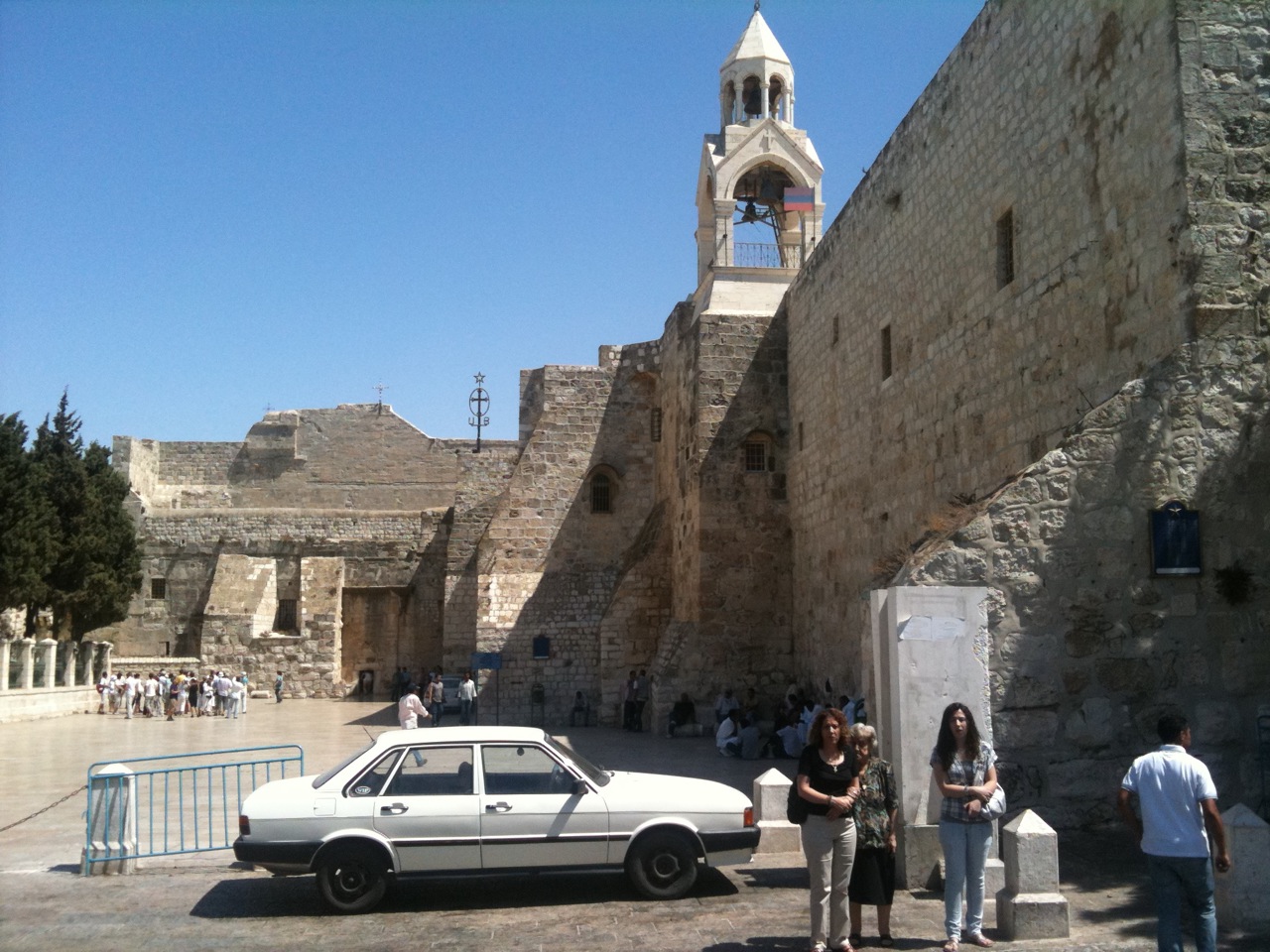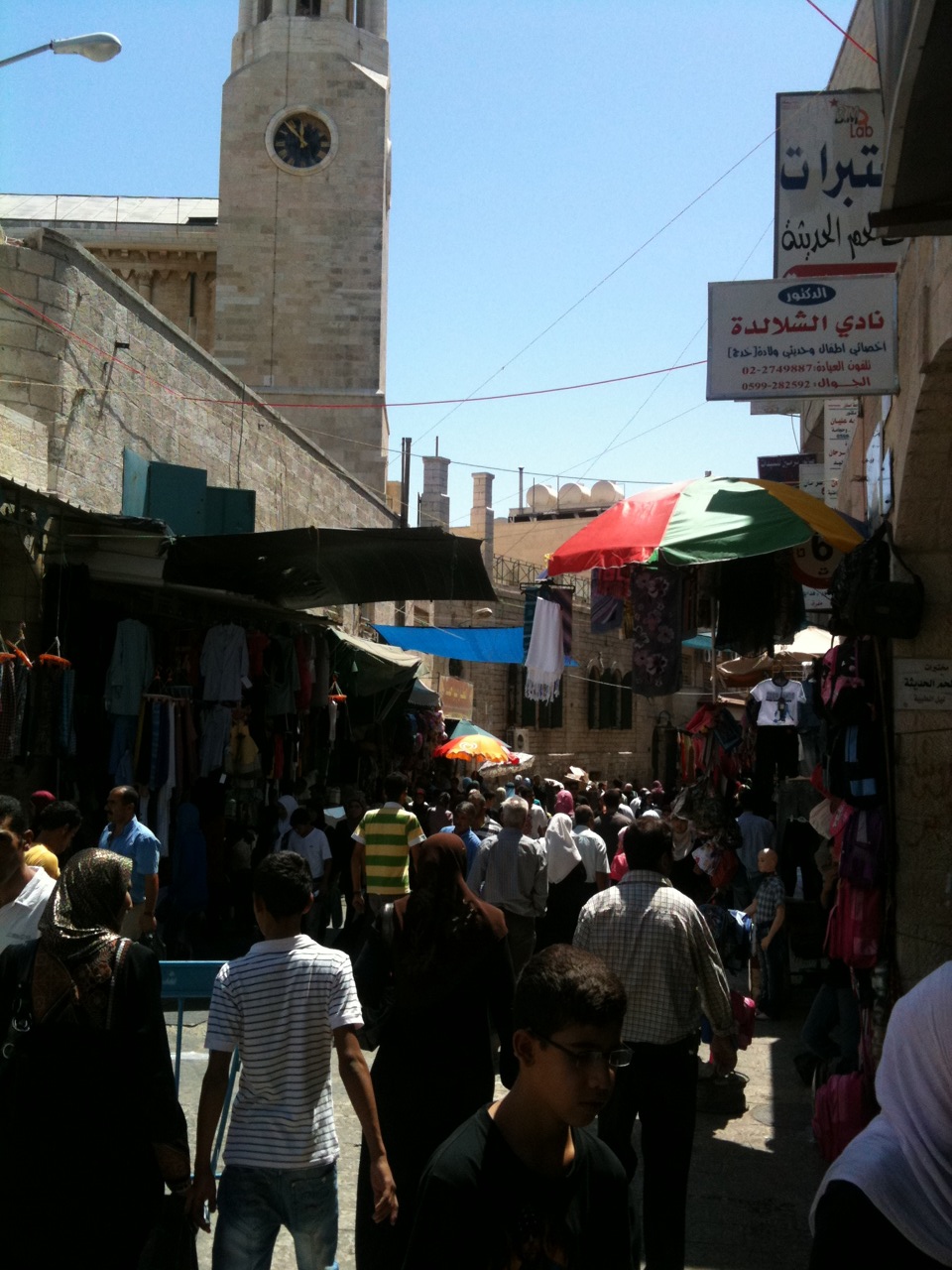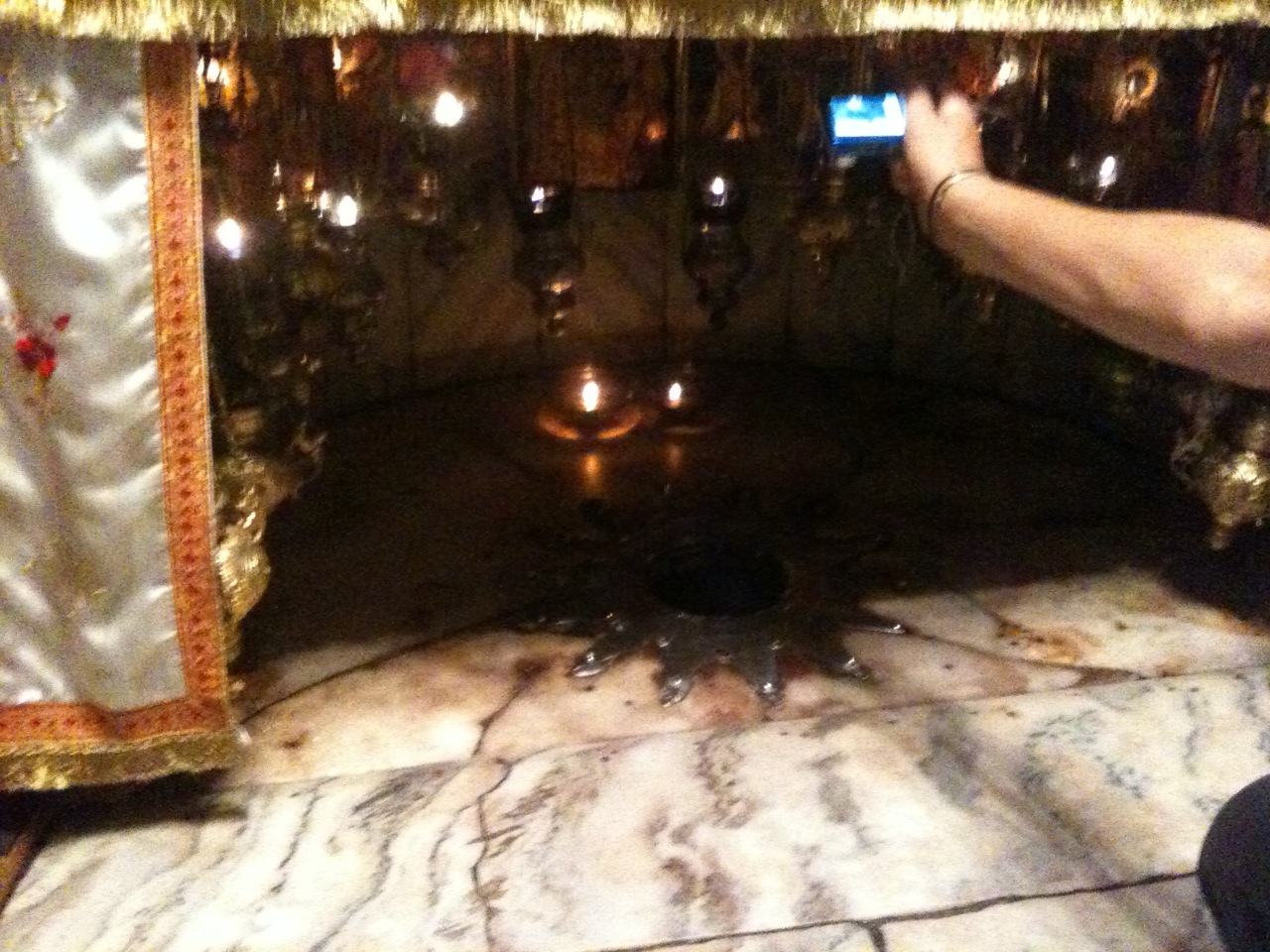On the Sabbath a lot of Jewish stuff is closed, so this seemed the perfect day to visit the occupied west bank.
I started with Bethlehem, the supposed site of Jesus's birth. It is actually much more likely he was born in Nazareth - his home town, but Christians wanted to connect Jesus to the prophesies of a Jewish messiah, which required that he be born in Bethlehem. The Roman census used as a justification for the move in the Bible is known to have not taken place.
Bethlehem feels doesn't feel particularly holy. It is a typical Arab Market town, with all the noise, chaos, kebab stalls. and pushy shopkeepers one expects. The highlights are the church of the nativity, which marks where Jesus almost certainly wasn't born, and the milk grotto, which celebrates the lactation of the Virgin Mary's breasts (yes, really).
The next stop was Hebron. Hebron is perhaps the most contraversial of all the Jewish settlements. A group of ultra-orthodox Jews (many recent immigrants from America apparently) occupy a settlement in the centre of the downtown of Hebron, which is otherwise an Arab city. The motivation for the settlement is that it is the second holiest site in Judaism (burial site for Abraham, Sarah, Isaac, Rebecca, Jacob and Leah) and that Jews had lived in that area continuously for thousands of years, interrupted only by the Hebron massacre. Naturally, the site is also considered sacred by Muslims.
Initially the settlement was ruled illegal, but now it is supported by the government. To protect the settlers from the Arab locals, the whole of the downtown has been closed off to Muslims (we were allowed in), leaving it largely deserted, and a large army presence camps out on the roofs of local buildings.
Many local people have lost access to the original entrances to their buildings and journey times around the outer downtown have increased because locals can't walk through the middle. Perhaps most egregiously, settlers living on upper floors above the market routinely throw things at the people below, including rocks, chairs, and eggs. For this reason, many streets have wire nets above them to catch thrown missiles.
Tensions are particularly high at the moment because four Hebron settlers were killed by Hamas earlier in the week. The settlers traditionally make an army-escorted walk through the town to the Tomb of the Patriarchs every Shabbat and it was expected that this one would be particularly heated. We judged that it would be too dangerous to watch directly and so instead arranged to watch from a rooftop controlled by "Christian Peacemaker Teams" (CPT). In the end it turned out that this week's march had been cancelled. This was definitely for the best, but a bit of an anti-climax.
The soldiers assigned to keep peace are normal Israelis given the assignment as part of military service. The soldiers reportedly despise the settlers and hate the assignment. The arabs abuse them because they defend the settlers and the settlers abuse them because they restrict the actions of the settlers.
More generally there is clear tension between secular Israelis and the ultra-religious. The ultra-religious create problems by building settlements in provocative places and going round telling people that God has told them they should occupy the whole of Israel (playing right into the hands of Israel haters who claim that this is the main reason the other settlements exist), but then refuse to help sort their problems out by shirking military service for religious reasons. On the other hand, it's not clear that giving machine guns to religious nutcases would be that great an idea anyway.
On a related note, Israel seems to be facing two separate demographic time-bombs. The Arab population is reproducing as fast as their bodies will allow, and the ultra-orthodox aren't far behind. Both are a threat to the future if a secular Jewish Israel.




